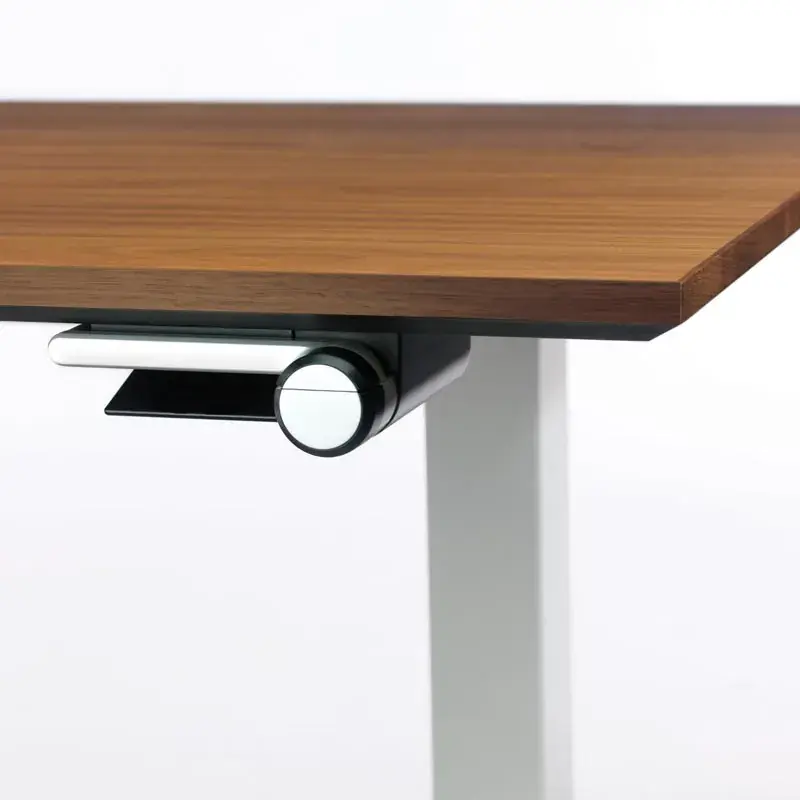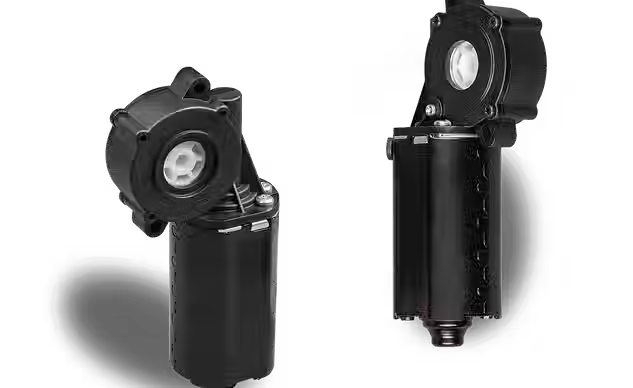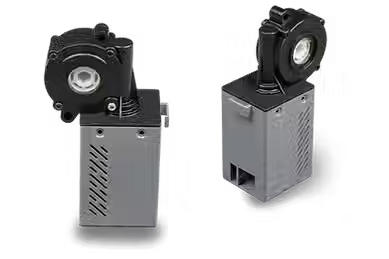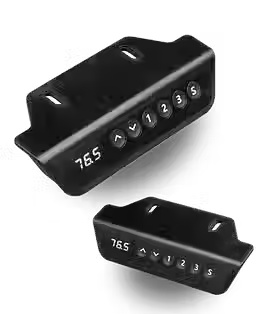Hydraulic Vs. Electric Linear Actuator: Which Is Best?
- Xie
- Jul 28
- 8 min read
Understanding Hydraulic and Electric Linear Actuators
Linear actuators play a crucial role in various applications, both in industrial settings and daily life. Among the most commonly used types are the hydraulic linear actuator and the electric linear actuator. Each offers unique benefits, making them suitable for different situations.
If you have any questions or are interested in our products, feel free to contact us

Hydraulic Linear Actuator
A hydraulic linear actuator relies on fluid movement to create mechanical motion. It is particularly effective in heavy-duty applications, providing a significant amount of force in a compact design. This type of actuator is commonly used in construction, manufacturing, and automotive sectors. The power of hydraulic systems allows for precise, controlled movements, making them ideal for tasks that require heavy lifting.
Electric Linear Actuator
In contrast, an electric linear actuator is powered by an electric motor, converting electrical energy into mechanical motion. These actuators are known for their high efficiency and ease of control, making them a perfect choice for robotics, automation systems, and consumer electronics. They offer low maintenance requirements and are generally quieter than their hydraulic counterparts, making them more suitable for indoor applications.
Hydraulic: High force output, compact design
Electric: Efficient, low maintenance
The choice between a hydraulic linear actuator and an electric linear actuator largely depends on the specific needs of your application. A comparison table can provide a clear overview of their features:
Conclusion
Understanding the differences between hydraulic and electric linear actuators can significantly impact the efficiency of your projects. Each actuator has its strengths, and assessing your specific requirements is key to making an informed decision.
Power Needs
Space Constraints
Noise Sensitivity
Choosing the right actuator can enhance productivity and ease of use in your systems.
Advantages of Using Hydraulic Actuators in Industry
The integration of hydraulic actuators, especially hydraulic linear actuators, brings numerous advantages to various industrial applications. These devices provide remarkable force variation and precise control, making them ideal for heavy machinery and demanding environments. Unlike electric linear actuators, hydraulic systems can handle larger loads and exhibit consistent performance under fluctuating conditions, making them indispensable in industries like construction, manufacturing, and aerospace.
Efficiency and Power
One of the primary benefits of hydraulic linear actuators is their efficiency in generating significant force with minimal energy consumption. This efficiency results from the hydraulic fluid's incompressibility, allowing the actuator to multiply force effectively. In contrast, electric linear actuators may struggle with heavier loads and can consume more power to achieve similar movements, especially in high-friction environments. Here is our homepage
Durability and Maintenance
Hydraulic actuators are known for their durability, often requiring less frequent maintenance than their electric counterparts. While electric linear actuators may suffer from wear and tear due to their moving electrical components, hydraulic actuators have fewer moving parts, which significantly reduces the chances of breakdowns and prolongs service life.
Greater load capacity
High speed and responsiveness
Robust performance in harsh environments
Feature | Hydraulic Linear Actuator | Electric Linear Actuator |
Load Capacity | High | Moderate |
Energy Efficiency | High | Variable |
Conclusion
By leveraging the inherent advantages of hydraulic linear actuators, industries can enhance their operational efficiency and minimize downtime. This reliability ensures that production schedules remain uninterrupted and that performance goals are consistently met.
Consider hydraulic actuators for heavy machinery
Evaluate performance needs specific to your industry
“Investing in hydraulic linear actuators can significantly bolster operational capabilities and performance quality across various industries.”
Explore more insightful articles like this one – we have plenty more for you to discover here!
Why Choose Electric Linear Actuators for Precision Tasks
When it comes to achieving high precision in various applications, Electric Linear Actuators stand out against traditional Hydraulic Linear Actuators. The pinpoint accuracy of Electric Linear Actuators ensures that even the most intricate tasks can be performed efficiently. This technology provides consistent and accurate motion control, making it a preferred choice for industries where precision is paramount.

Benefits of Electric Linear Actuators
Electric Linear Actuators offer numerous advantages that enhance their effectiveness for precision tasks. For starters, they are simpler to install and maintain compared to Hydraulic Linear Actuators. Their electric nature means reduced power consumption over time, resulting in lower operational costs. Furthermore, the ability to integrate with advanced control systems enhances their versatility in various tech-driven environments.
Applications for Electric Linear Actuators
Electric Linear Actuators are widely used across various industries. Their applications range from robotics to automated systems, demonstrating their adaptability for different tasks. Whether it's positioning components with high accuracy or facilitating movements in manufacturing, Electric Linear Actuators are exceptionally reliable.
Robotics
Automated manufacturing
Medical devices
Conveying systems
With their growing importance, understanding the distinctions between Hydraulic and Electric Linear Actuators can lead to better decision-making for applications ensuring precision.
Feature | Electric Linear Actuator | Hydraulic Linear Actuator |
Precision | High | Moderate |
Maintenance | Low | High |
Power Consumption | Low | High |
Making the Choice
In summary, Electric Linear Actuators provide compelling benefits in precision applications. Their efficiency and reduced maintenance make them suitable for a myriad of solutions. Stakeholders should assess their operational needs to determine the best choice between Electric and Hydraulic Linear Actuators.
Consider application requirements
Evaluate cost versus benefits
Investing in Electric Linear Actuators can transform your precision tasks, leading to enhanced productivity and efficiency.
Key Differences Between Hydraulic and Electric Actuators
Understanding the essential differences between hydraulic linear actuators and electric linear actuators can greatly impact your project's efficiency. While both types of actuators serve the same purpose—converting energy into linear motion—they operate through very different principles. Hydraulic actuators rely on fluid pressure to generate movement, while electric actuators use electric motors. This fundamental distinction leads to varying performance characteristics, including speed, force, and maintenance needs.

Power Source
Hydraulic linear actuators require a hydraulic pump and fluid, commonly making them suitable for heavy-duty applications, whereas electric linear actuators use electrical power, providing a cleaner and quieter solution. The choice between these two depends significantly on application requirements, such as load size and precision.
Maintenance and Durability
Maintenance is another critical factor to consider. Hydraulic systems need regular fluid checks and replacements, making them higher maintenance. In contrast, electric linear actuators typically offer greater reliability with less frequent upkeep. Therefore, understanding maintenance demands helps ensure long-term system efficiency.
Cost Considerations
The initial cost and long-term operational expenses also differ significantly. Hydraulic systems can be more expensive upfront but may offer enhanced value in specialized applications requiring high force. Electric options usually have lower acquisition costs but can increase energy expenses over time.
Hydraulic Linear Actuators: High force, fluid-based operation
Electric Linear Actuators: Lower force, motor-driven approach
Hydraulic: Requires pumps and fluids for operation
Electric: More compact and often quieter
Aspect | Hydraulic Linear Actuator | Electric Linear Actuator |
Power Source | Hydraulic Fluid | Electric Motor |
Maintenance | Higher | Lower |
Force | High | Moderate |
“Choosing the right actuator type can transform your project’s functionality and efficiency. Make an informed decision!”
Explore more insightful articles like this one – we have plenty more for you to discover here !
Applications of Hydraulic and Electric Linear Actuators
Hydraulic and electric linear actuators are key components in numerous industries due to their unique properties and capabilities. The hydraulic linear actuator utilizes fluid pressure to generate movement, making it ideal for heavy-duty applications that require significant force. On the other hand, the electric linear actuator offers precise control and is often preferred in situations where speed and accuracy are critical. Understanding their specific applications can help businesses choose the right actuator for their needs.

Industrial Applications
Hydraulic linear actuators excel in industries such as manufacturing and construction, where high power and load-bearing capacities are necessary. They are commonly used in heavy machinery, like excavators and presses, enabling the precise movement of large components. Electric linear actuators are prevalent in automation systems, offering efficient movement for assembly processes and packaging lines. Their precision makes them a favorite in robotics and CNC machinery.
Aerospace and Automotive Industries
In the aerospace sector, hydraulic linear actuators are critical for systems such as landing gears and control surfaces due to their robustness. Conversely, electric linear actuators are increasingly utilized in automotive applications, enhancing functions like electronic throttle control and seat adjustments.
Compression and Injection Molding
Automotive Manufacturing
Robotics and Automation
Aerospace Controls
The versatility of these actuators enhances operational efficiency across various sectors. Here’s a breakdown of typical applications:
Type | Application | Advantages |
Hydraulic Linear Actuator | Heavy Machinery | High force, durability |
Electric Linear Actuator | Robotics | Precision, speed |
Conclusion
Both hydraulic and electric linear actuators play a vital role in improving productivity and efficiency across different industries. Identifying the right actuator for your specific needs can lead to enhanced performance and better operational results.
Consider load requirements
Evaluate space constraints
Assess control precision needs
Choosing the right actuator can significantly impact your project’s success. Understand your requirements before making a decision!
Maintenance Tips for Long-lasting Actuator Performance
Ensuring the longevity of your hydraulic linear actuator or electric linear actuator is crucial for optimal performance. Regular maintenance not only enhances efficiency but also prevents costly repairs. Begin with routine inspections to identify wear and tear in components, ensuring all parts are functioning correctly.

Lubrication and Cleaning
Your actuators require proper lubrication to minimize friction and wear. For hydraulic linear actuators, use the recommended hydraulic fluids while electric linear actuators benefit from silicone-based lubricants. Additionally, keep the actuator’s housing clean from debris and contaminants; dirt can severely affect its functionality and lifespan.
Environmental Considerations
Both types of actuators can be affected by environmental conditions. Ensure that hydraulic linear actuators are shielded from moisture and corrosive materials. For electric linear actuators, maintain adequate airflow to prevent overheating, especially in industrial environments where heavy workloads are common.
Regularly inspect seals and gaskets for leaks.
Monitor voltage levels in electric actuators to avoid overheating.
Schedule periodic professional maintenance checks.
Implementing these maintenance strategies can significantly enhance the durability of your actuators.
Final Thought
Prioritizing maintenance for your hydraulic and electric linear actuators will ensure long-lasting reliability and efficiency.
Keep an eye on performance metrics.
Schedule annual maintenance reviews.
Invest in quality replacement parts.
“An ounce of prevention is worth a pound of cure.”
FAQs About Hydraulic and Electric Linear Actuators
When considering automation solutions, the choice between hydraulic linear actuators and electric linear actuators can be challenging. Both types offer unique advantages and applications that suit different needs. Hydraulic linear actuators are known for their power and ability to lift heavy loads, while electric linear actuators provide precision and simple integration with control systems. Understanding the key differences and functionalities of each type can help you make the right choice for your project.

What are the main differences?
The primary distinction between hydraulic and electric linear actuators lies in their operation. Hydraulic linear actuators utilize pressurized fluid to create movement, making them ideal for heavy-duty applications. In contrast, electric linear actuators employ electric motors to achieve linear motion. This results in quieter operation and reduced maintenance needs for electric versions, whereas hydraulic systems might require more upkeep due to fluid management.
Which is more cost-effective?
Cost-effectiveness varies based on your specific application. While hydraulic linear actuators generally have a higher initial installation cost, their durability and power can justify the investment for heavy loads. Electric linear actuators, however, often have lower initial costs and require less energy to operate, making them a viable option for smaller projects.
Hydraulic actuators require fluid management.
Electric actuators offer quieter operation.
Hydraulic actuators are better for heavy loads.
Feature | Hydraulic Linear Actuator | Electric Linear Actuator |
Power | High | Medium |
Maintenance | Higher | Lower |
Cost | Higher initial cost | Generally lower |
Conclusion
In conclusion, both hydraulic and electric linear actuators serve essential roles in automation technologies. Choosing the right one depends on factors such as load requirements and operational costs.
Consider application needs.
Evaluate costs and maintenance.
Research potential suppliers.
“Selecting the right actuator is crucial for enhancing performance in automation projects!”






Comments